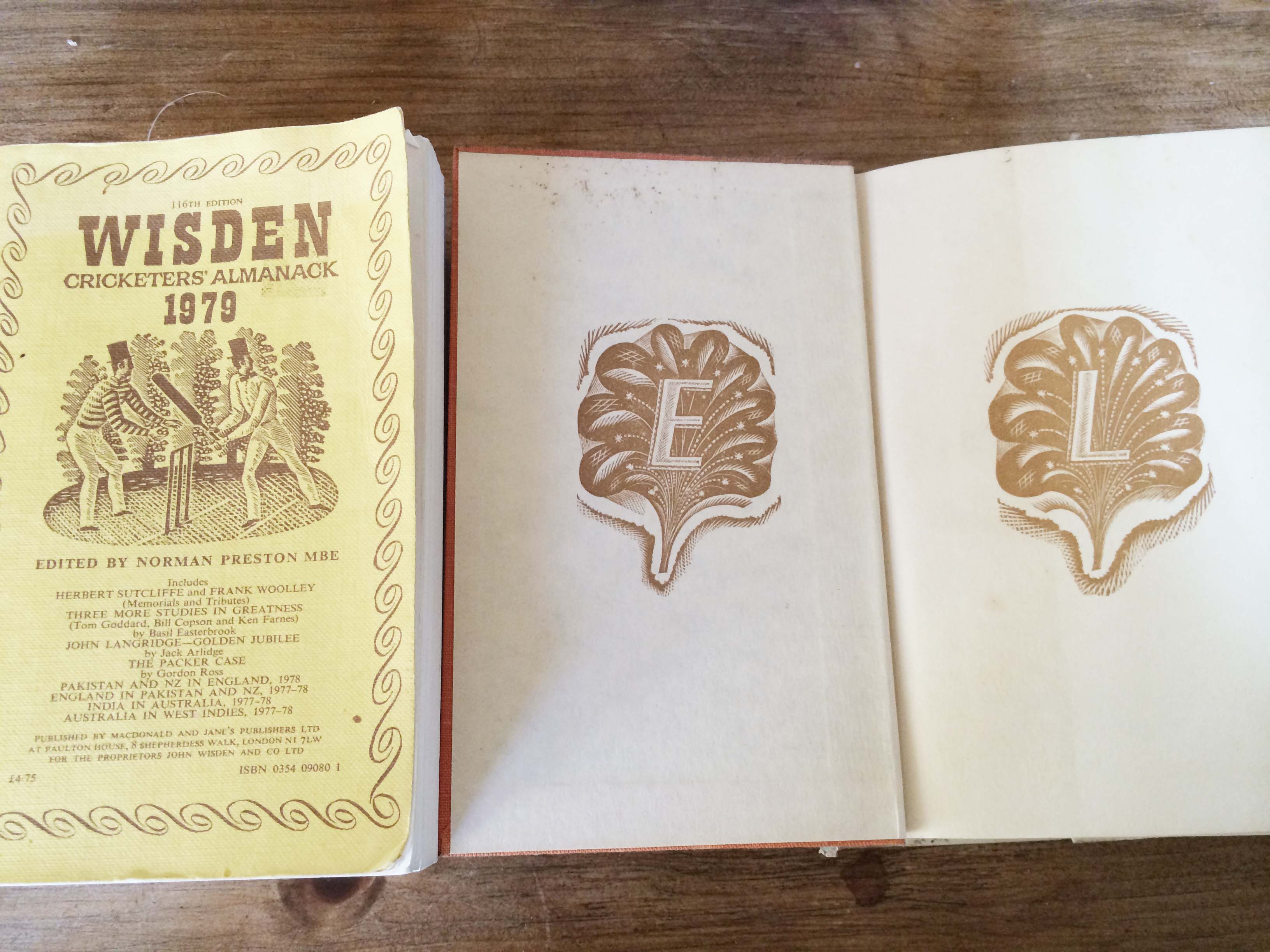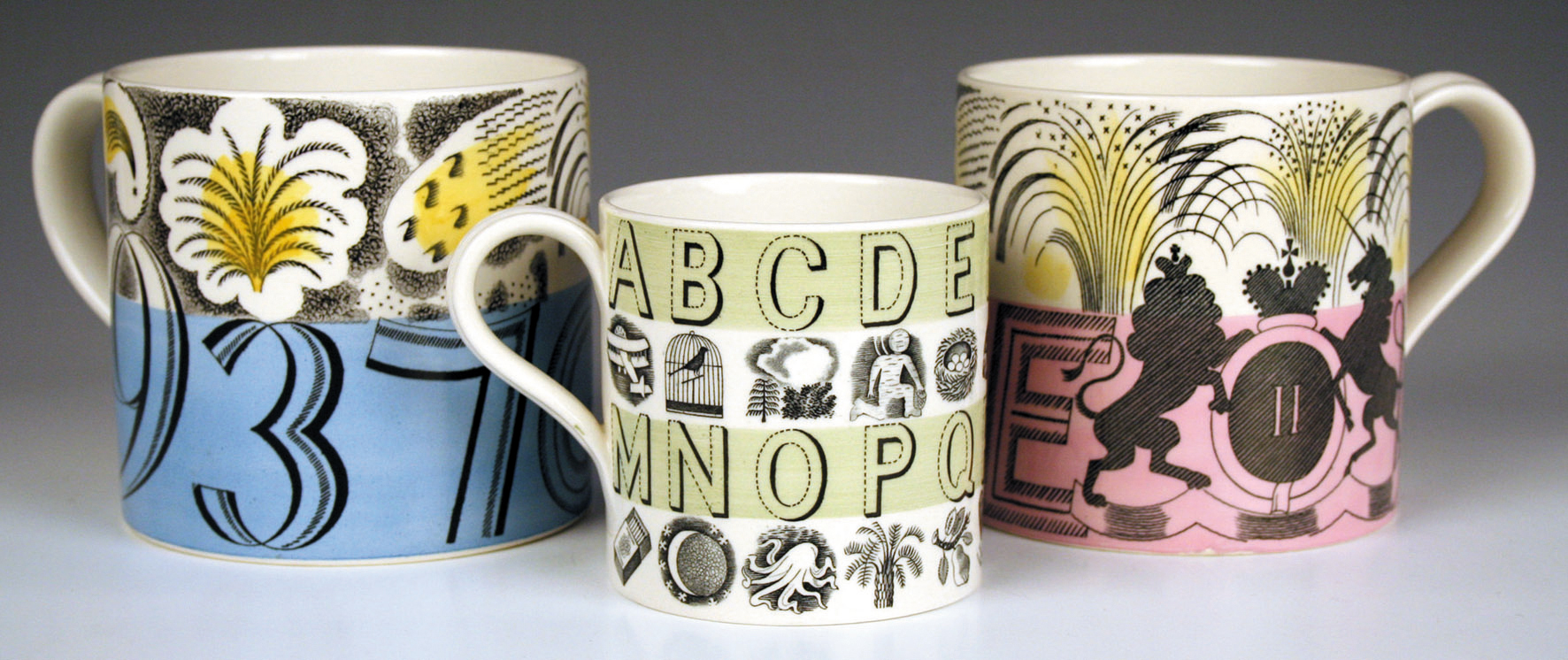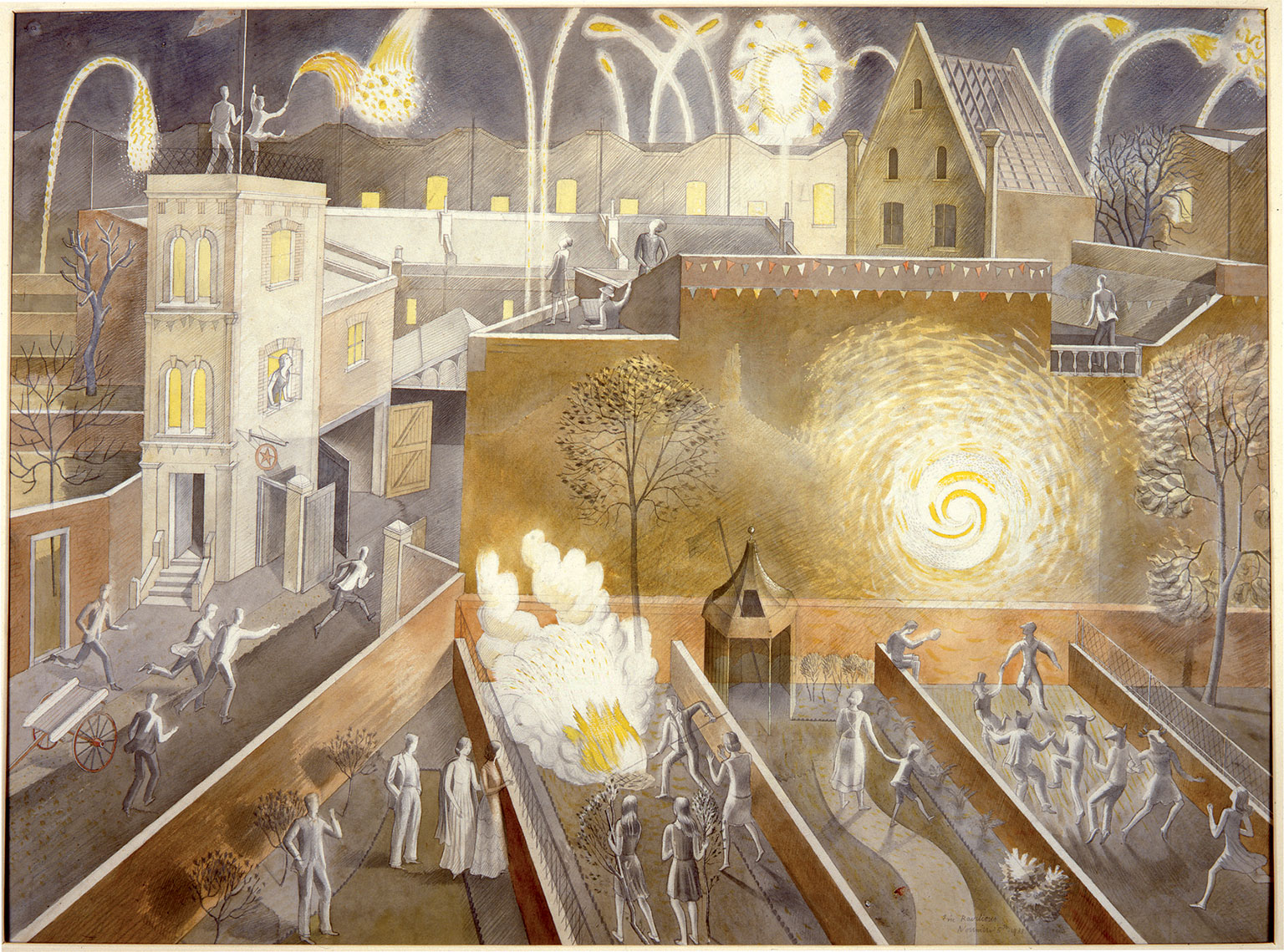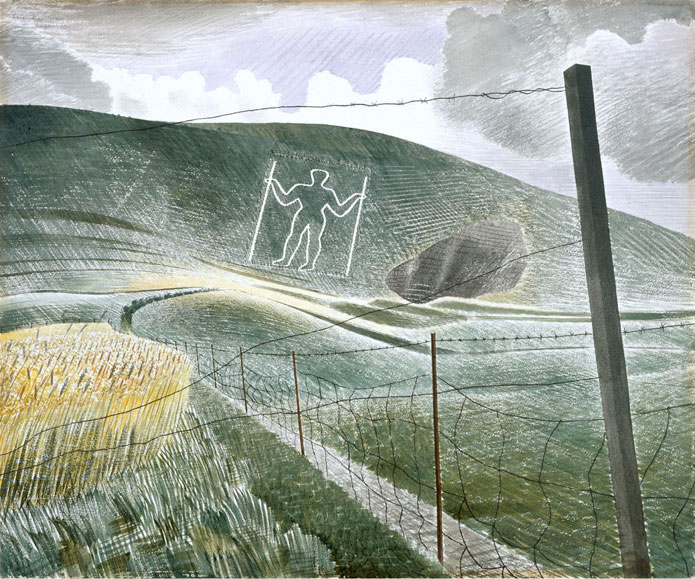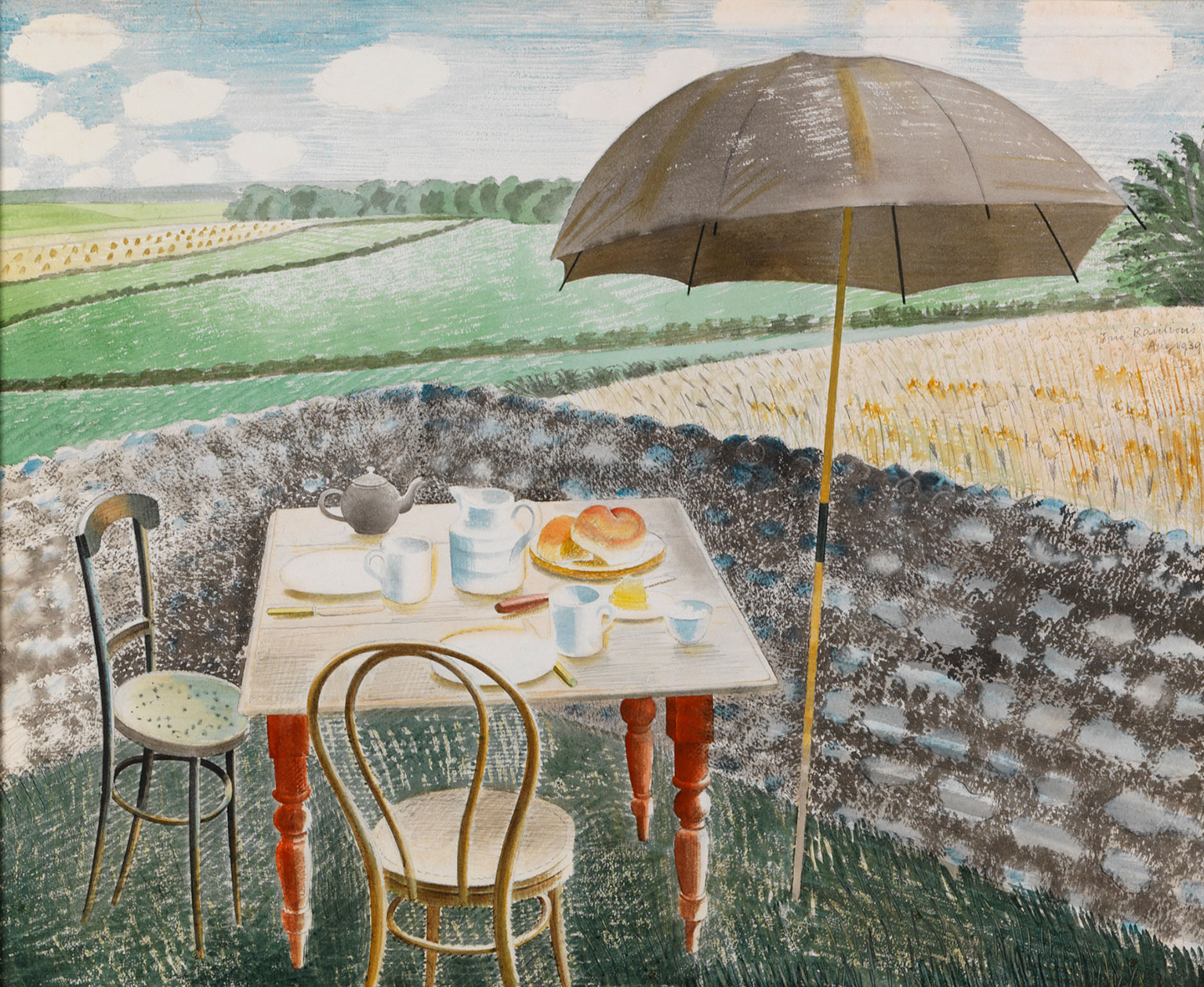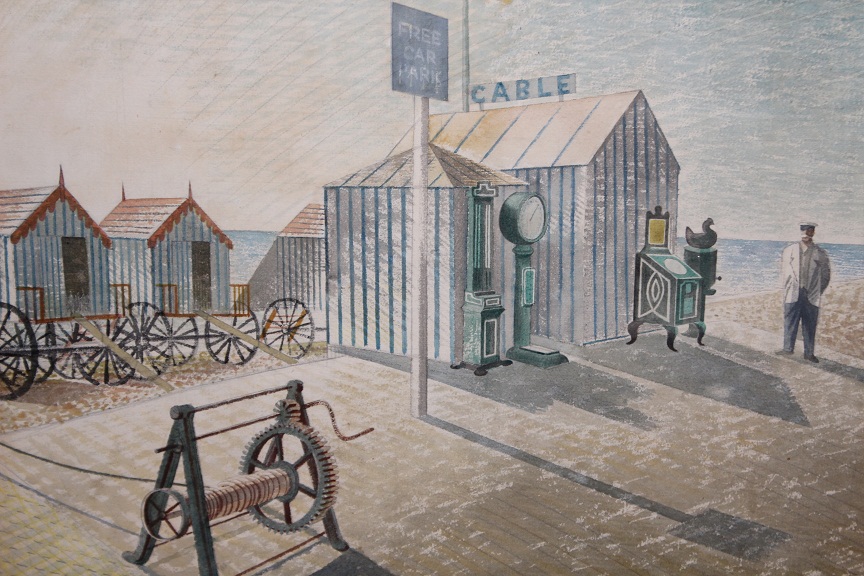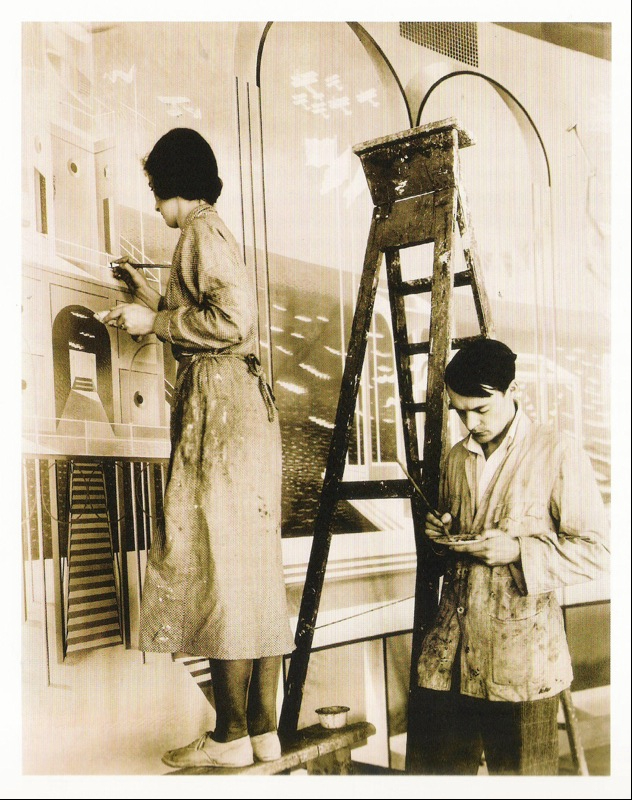The Eric Ravilious Exhibition at Dulwich Picture Gallery is finishing this weekend (31/08/15) and all pre-sale tickets have now been sold. Fortunately there are still a few tickets up for grabs on the door if you get there early. We couldn’t recommend it more!
Eric Ravilious was mentioned in our feature about Marion Dorn, carpet designer extraordinaire, and the Midland Hotel in Morecambe SO… it seems a good time to go into a little more about him and his wonderful work…
Eric Ravilious was born in Acton, West London, in July, 1903. After the financial market crashed in 1907, he and his family upped sticks and moved to Eastbourne on the coast. Eastbourne was particularly well known at the time for its early role in aviation and one of the first pieces we know of from Ravilious’ sketchbook is a “Blackburn” Monoplane.
In 1922 he enrolled (with Edward Bawden) at the Royal College of Art where he began his career as an artist. One of their first commissions together was for a series of murals at Morley College, near Elephant & Castle in London. These were unfortunately destroyed by bombing in 1940 but the study for the murals still exists.
In 1935 the Everyman’s Library editions spotted his potential and commissioned him for their front and inside covers.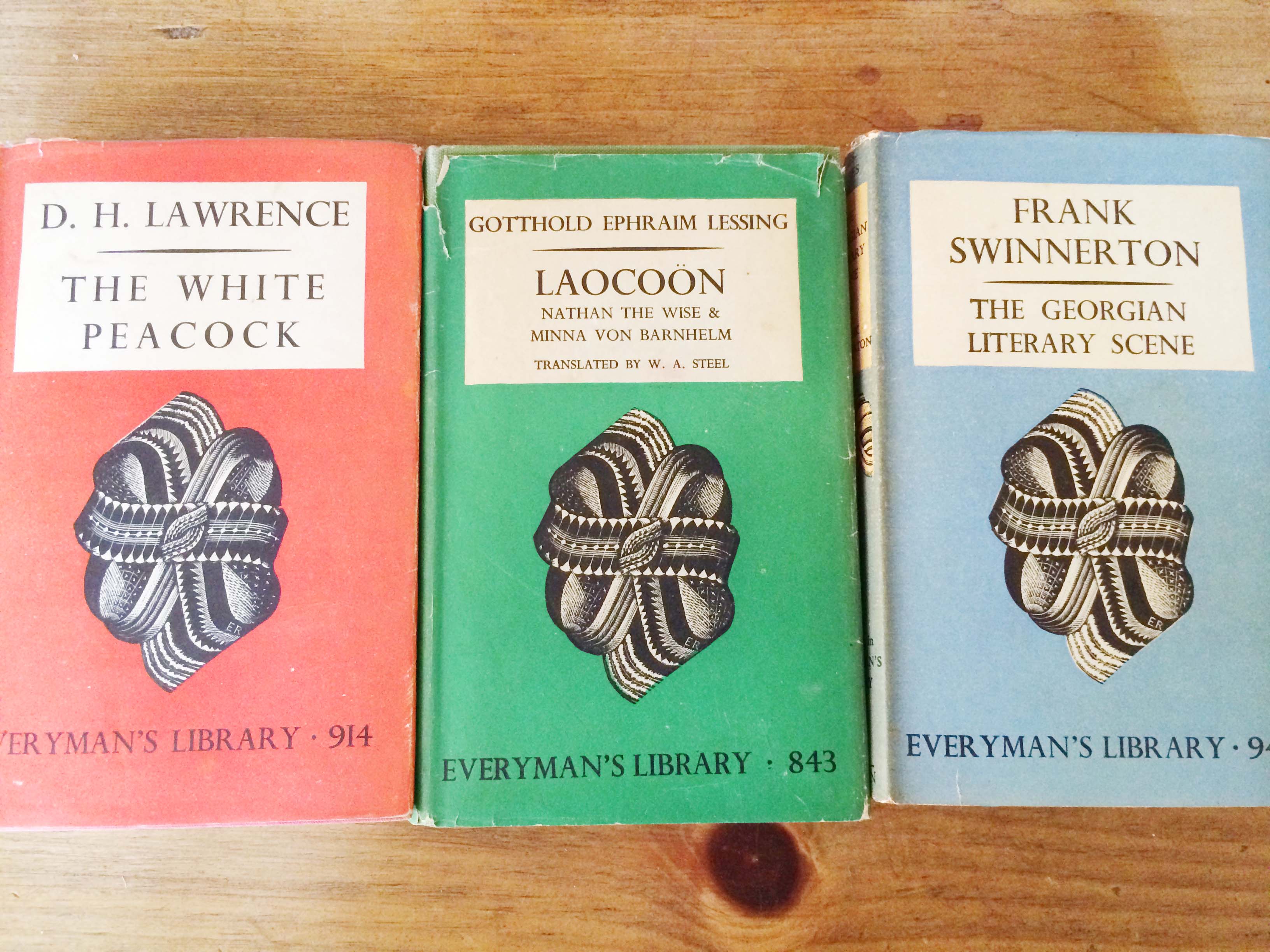
With the caption in the inside flap: “The new decorations are the work of one of the younger modern wood-engravers, Mr. Eric Ravilious, and will be introduced gradually into all the volumes in the Library as the present bound stock of each volume is exhausted.”
He was also commissioned for the front cover of the Cricketers’ Almanack Wisden (an annual summary of cricket matches played in the year), which is still published annually with his striking cricket image.
His images also adorned Wedgewood pottery, the most well known of which were their coronation and alphabet mugs.
Famous for beautiful watercolours, with pastel or pencil, of the countryside, war paintings and interiors with bold lines and texture, here are some of our favourites:
November 5th – Ravilious loved Bonfire Night and any festivals really. Although better known for landscapes, this is full of fun figures and even quite pagan in the bottom right hand section.
The Wilmington Giant – this was bought by the Victoria and Albert Museum as soon as it was finished, as one of his finest from the “Chalk Figure” series.
Tea at Furlongs – this was possibly started just before or during the early part of the war and then finished later, showing an idyllic rural scene untouched by war. The chairs are too delicate to be outside and sat on, and the old umbrella a bit incongruous as a sun shade.
Aldeburgh Bathing Machines – we particularly like the token chickens that make a guest appearance in this series of paintings.
On a personal level he was happily married to Tirzah whom he met in his student days. She was, of course, an artist in her own right and the below photo shows them working together on the Midland Hotel commission.
He was good friends with artists, Henry Moore, John Nash and Edward Bawden. He also loved sport – tennis and cricket in particular – and quite clearly enjoyed nature as evidenced by his wonderful outdoor scenes.
Ravilious is still somewhat of a mystery in many ways. He was employed by the British government during World War II as a war artist so many of his pieces were of a sensitive nature. We do however know that he was sometimes frustrated that his war paintings were censored. For example in the painting “No. 1 Map Corridor” below you can see that the second word on the sign hanging from the ceiling has been erased. It is thought that Ravilious erased the word “Damages” so that his painting would pass the strict censorship rules. This however was in vain as the painting was still not shown under censorship rules until after the end of the war.
Another mystery surrounding Ravilious is how he met his end. He was reported missing in 1942 and his body never found. It is thought that he died after the engine of the Air Sea Rescue plane he was flying in iced up whilst on a mission in Iceland.
Eric Ravilious is justifiably revered as one of our most popular artists of the 20th century and a true English romantic.
